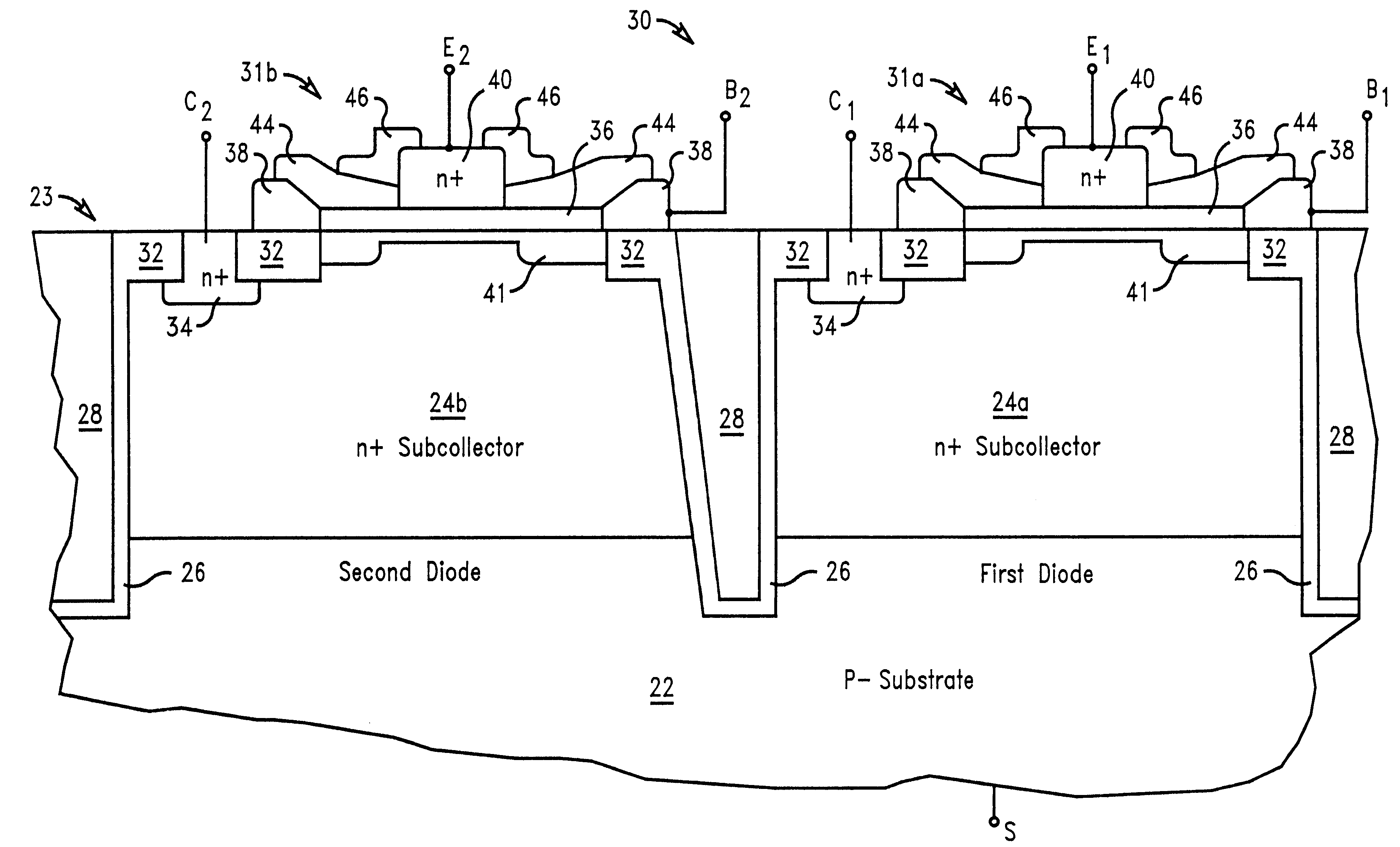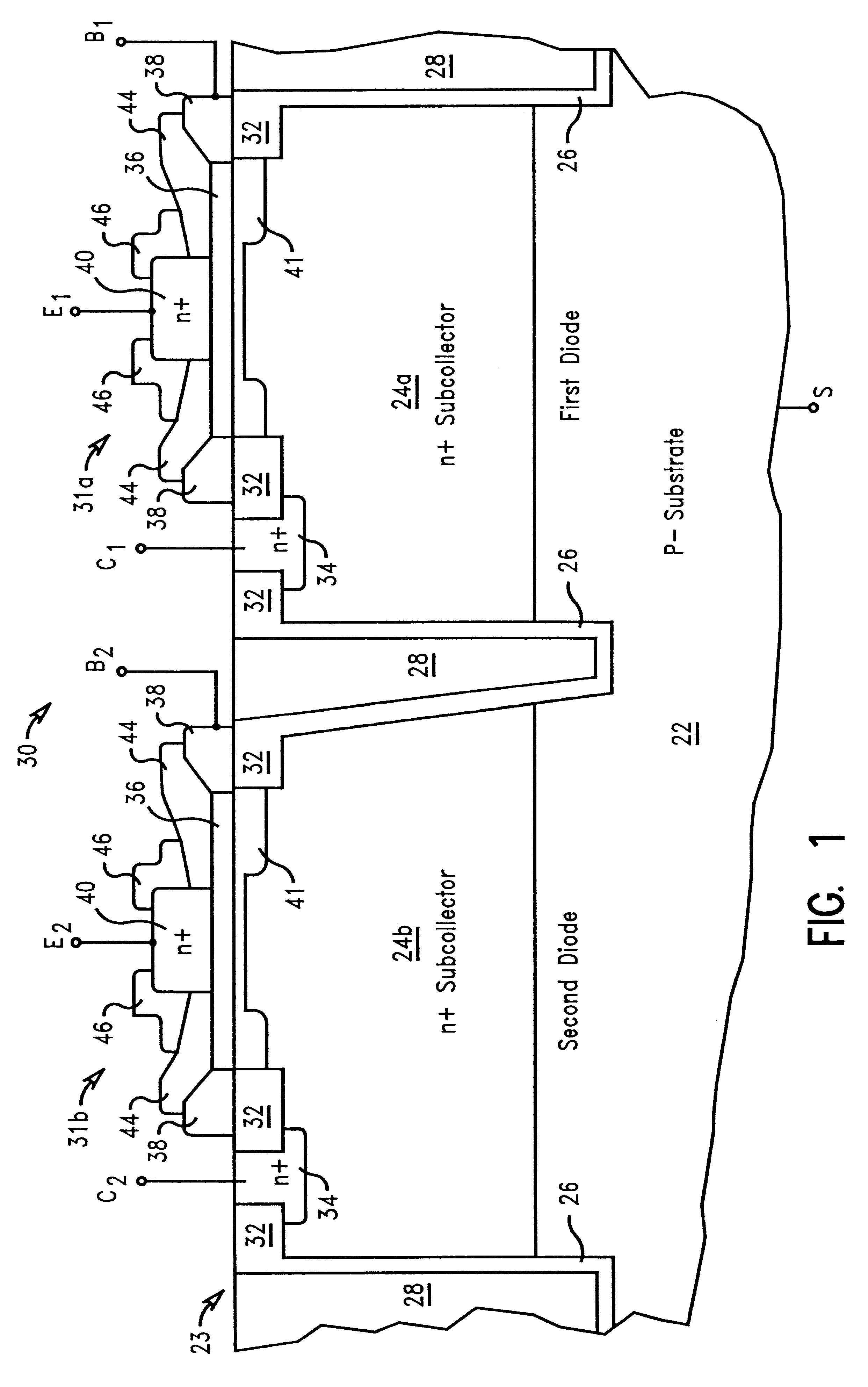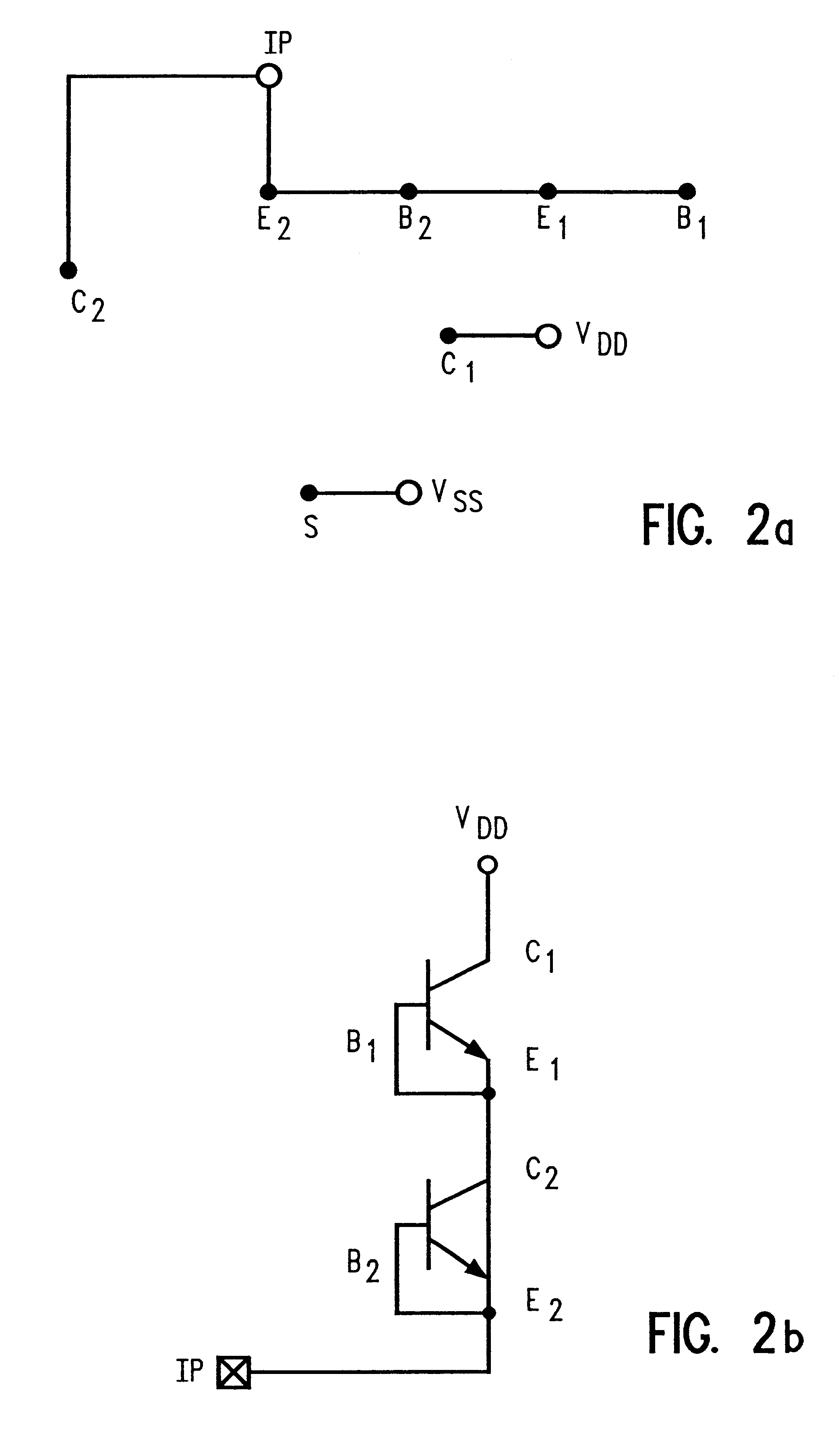Trench-defined silicon germanium ESD diode network
a diode network and silicon germanium technology, applied in the field of microelectronic devices, can solve the problems of affecting device performance, unable to fully or partially operate the device, and difficult to achieve, so as to prevent harmful voltage and current spikes
- Summary
- Abstract
- Description
- Claims
- Application Information
AI Technical Summary
Benefits of technology
Problems solved by technology
Method used
Image
Examples
Embodiment Construction
)
In describing the preferred embodiment of the present invention, reference will be made herein to FIGS. 1-28 of the drawings in which like numerals refer to like features of the invention. Features of the invention are not necessarily shown to scale in the drawings.
The present invention provides an ESD network which is formed using silicon germanium (SiGe) transistor elements for radio frequency (RF) and mixed signal applications as well as for mixed voltage interface network for digital / analog applications. SiGe heterojunction bipolar transistor (HBT) devices in diode configuration provide ESD protection. Also, SiGe HBT device base-collector or base-emitter junctions provide ESD protection for positive pulses, and SiGe HBT device collector-substrate junctions provide ESD protection for negative pulses. SiGe HBT devices in serial configuration provide ESD protection for mixed signal applications.
FIG. 1 shows an embodiment of the present invention and depicts a diode network 30 whic...
PUM
 Login to View More
Login to View More Abstract
Description
Claims
Application Information
 Login to View More
Login to View More - R&D
- Intellectual Property
- Life Sciences
- Materials
- Tech Scout
- Unparalleled Data Quality
- Higher Quality Content
- 60% Fewer Hallucinations
Browse by: Latest US Patents, China's latest patents, Technical Efficacy Thesaurus, Application Domain, Technology Topic, Popular Technical Reports.
© 2025 PatSnap. All rights reserved.Legal|Privacy policy|Modern Slavery Act Transparency Statement|Sitemap|About US| Contact US: help@patsnap.com



